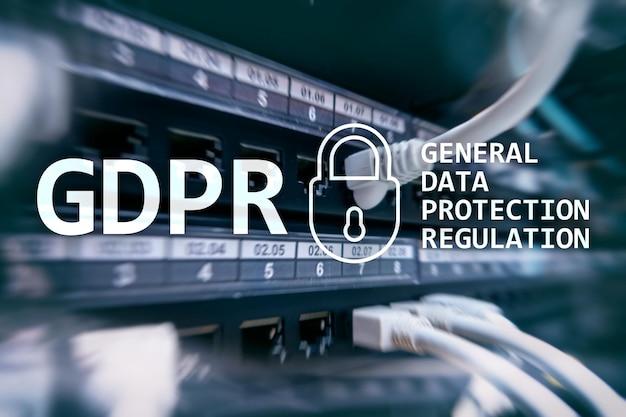Data Security and Compliance in Storage as a Service

Audio : Listen to This Blog.
In today’s digital era, cloud computing has revolutionized “Storage as a Service” (SaaS) by providing scalable, cost-effective, and flexible data storage options. However, with the convenience of storing data in the cloud comes the paramount responsibility of ensuring data security and compliance with various regulations. This blog explores the critical security measures and compliance standards for protecting data in storage as a service environment, focusing on encryption techniques, access control mechanisms, data integrity, and key regulations such as GDPR and HIPAA.
Encryption Techniques
In an increasingly digital world, safeguarding sensitive data is paramount, especially in storage as a service environments. End-to-end encryption (E2EE) is a formidable shield, ensuring data remains encrypted from sender to recipient, impervious to interception even by cloud service providers. Alongside encryption at rest and in transit, robust key management practices fortify data security, empowering businesses to maintain control over their encryption keys and safeguard their valuable information.
1. End-to-End Encryption: End-to-end encryption (E2EE) is a robust security measure ensuring that data is encrypted on the sender’s device and remains encrypted until it reaches the recipient’s device. This approach guarantees that data is protected during transit and storage, making it unreadable to unauthorized parties, including cloud service providers. E2EE is particularly important in storage as a service environment where sensitive information is frequently transmitted and stored.
2. Encryption at Rest and in Transit: Encryption at rest protects data stored on physical media, such as hard drives or SSDs, by converting it into an unreadable format using cryptographic algorithms. Block storage is a common storage method for STaaS, enabling customers to provision block storage volumes for lower-latency input/output (I/O) operations. Common algorithms include the Advanced Encryption Standard (AES) with 256-bit keys. Encryption in transit, on the other hand, secures data while it is being transmitted over networks. Protocols like Transport Layer Security (TLS) and Secure Sockets Layer (SSL) protect data during transfer, preventing interception and eavesdropping.
3. Key Management: Effective encryption relies on secure key management practices. This includes securely generating, distributing, storing, and rotating encryption keys. Many storage-as-a-service providers offer managed key services, which automate these processes while ensuring that keys are stored in hardware security modules (HSMs) or other secure environments. Some providers also support bring-your-own-key (BYOK) models, allowing businesses to retain control over their encryption keys.
Access Control Mechanisms
Features like multi-factor authentication (MFA), single sign-on (SSO), and role-based access control (RBAC) fortify defenses by requiring stringent verification methods and limiting access based on users’ roles and responsibilities. Moreover, regular auditing and monitoring of access logs are pivotal, providing insights into user activity and enabling swift detection and response to potential security threats, thus ensuring the integrity and confidentiality of stored data.
1. Identity and Access Management (IAM): Identity and Access Management (IAM) systems are crucial for enforcing access control policies in storage as a service environment. IAM systems manage user identities and access privileges, ensuring only authorized users can access sensitive data. Features such as multi-factor authentication (MFA), single sign-on (SSO), and role-based access control (RBAC) enhance security by requiring multiple forms of verification and limiting access based on users’ roles and responsibilities.
2. Role-Based Access Control (RBAC): RBAC is a security mechanism that assigns permissions to users based on their roles within an organization. By defining roles with specific access rights, RBAC ensures that users only have access to the data and resources necessary for their job functions. This minimizes the risk of unauthorized access and data breaches.
3. Audit Logs and Monitoring: Regularly auditing access logs and monitoring user activity are critical for identifying and responding to potential security threats. Storage as a service providers typically offer logging and monitoring tools that track access events, changes to data, and other relevant activities. These logs can be analyzed to detect suspicious behavior, such as unauthorized access attempts or unusual data transfers, enabling prompt action to mitigate risks.
Data Security and Integrity
Maintaining stringent control over access to sensitive data is imperative, and Identity and Access Management (IAM) systems serve as the cornerstone of security protocols. These systems orchestrate user identities and access privileges, employing robust features like multi-factor authentication (MFA) and role-based access control (RBAC) to fortify defenses against unauthorized entry.
1. Checksums and Hashing: Ensuring data integrity involves verifying that data has not been altered or corrupted. Checksums and cryptographic hashing algorithms, such as SHA-256, are commonly used techniques. When data is stored or transmitted, a checksum or hash value is calculated and stored alongside the data. Upon retrieval or reception, the checksum or hash is recalculated and compared to the original value to detect discrepancies, indicating potential data corruption or tampering.
2. Version Control: Version control systems help maintain data integrity by tracking changes to data over time. This allows users to revert to previous versions of files if necessary, ensuring that data can be restored to a known good state in case of accidental modification or deletion. Many storage as a service providers offer built-in versioning capabilities, enabling automatic tracking and management of file versions.
3. Redundancy and Replication: Data redundancy and replication strategies are essential for ensuring data availability and integrity. By storing multiple copies of data across different locations or devices, these strategies protect against data loss due to hardware failures, natural disasters, or other incidents. Redundant storage systems can automatically detect and correct errors, further enhancing data integrity.
Compliance Standards
Navigating the complex landscape of data security and compliance standards is essential for businesses, particularly in storage as a service. The General Data Protection Regulation (GDPR) sets stringent guidelines for protecting personal data within the European Union. At the same time, the Health Insurance Portability and Accountability Act (HIPAA) mandates safeguards for sensitive healthcare information in the US. STaaS helps organizations meet these compliance standards by eliminating the need to manage their own storage infrastructure.
1. General Data Protection Regulation (GDPR)

The General Data Protection Regulation (GDPR) is a comprehensive data protection law that applies to organizations operating within the European Union (EU) or processing the personal data of EU residents. GDPR mandates strict requirements for data protection, including obtaining explicit consent for data processing, implementing data minimization principles, and ensuring data security through appropriate technical and organizational measures. Non-compliance with GDPR can result in substantial fines and reputational damage.
2. Health Insurance Portability and Accountability Act (HIPAA)
HIPAA is a US law that sets national standards for protecting sensitive patient health information. It applies to healthcare providers, health plans, and their business associates. HIPAA requires the implementation of administrative, physical, and technical safeguards to ensure the confidentiality, integrity, and availability of electronic protected health information (ePHI). As a service provider catering to the healthcare industry, Storage must comply with HIPAA regulations to avoid severe penalties and ensure patient data protection.
3. Payment Card Industry Data Security Standard (PCI DSS)
PCI DSS is a set of security standards to protect payment card information. It applies to organizations that process, store, or transmit credit card data. Compliance with PCI DSS involves implementing measures such as encryption, access control, regular monitoring, and testing of security systems. Storage as a service provider handling payment card data, must adhere to PCI DSS requirements to safeguard sensitive financial information.
4. Federal Risk and Authorization Management Program (FedRAMP)
FedRAMP is a US government program that standardizes the security assessment, authorization, and continuous monitoring of cloud services used by federal agencies. FedRAMP compliance ensures that cloud service providers meet stringent security requirements, protecting government data and systems. Providers offering storage as a service to federal agencies must achieve FedRAMP certification to demonstrate their commitment to data security.
Implementing Security and Compliance in Cloud Storage as a Service

In the digital landscape, ensuring data security and compliance starts with selecting a storage as a service provider that adheres to industry standards and regulations. Evaluating providers based on certifications, security practices, and compliance with GDPR, HIPAA, PCI DSS, and FedRAMP is paramount.
1. Choosing a Compliant Provider
Selecting a storage as a service provider that complies with relevant security and regulatory standards is the first step in ensuring data protection. Businesses should evaluate providers based on their certifications, security practices, and compliance with GDPR, HIPAA, PCI DSS, and FedRAMP regulations. Providers that undergo regular third-party audits and assessments offer greater assurance of their security capabilities. Businesses should evaluate providers based on the storage services they offer, including subscription models, access through standard protocols or APIs, and value-added features like file sharing and backup management.
2. Conducting Regular Security Audits
Regular security audits are essential for identifying vulnerabilities and ensuring compliance with established standards. Businesses should conduct internal audits and engage third-party auditors to evaluate their storage as a service environment. These audits should assess the effectiveness of encryption techniques, access control mechanisms, data integrity measures, and compliance with relevant regulations. Regular audits can help manage and optimize storage costs by identifying opportunities to transfer expenses from capital expenditure to operating expenditure, such as through leasing storage equipment.
3. Employee Training and Awareness

Ensuring data security and compliance is not solely the responsibility of IT departments; it requires a collective effort across the organization. Regular training and awareness programs can educate employees about security best practices, compliance requirements, and their roles in protecting sensitive data. Training should cover topics such as recognizing phishing attempts, using strong passwords, and following data handling procedures.
4. Incident Response and Disaster Recovery Planning
Despite robust security measures, data breaches and incidents can still occur. An incident response plan is crucial for minimizing the impact of security breaches. The plan should outline procedures for detecting, reporting, and responding to security incidents, including data breaches. It should also include steps for notifying affected parties, conducting forensic investigations, and implementing corrective actions to prevent future incidents. Additionally, planning for sufficient storage capacity is essential to ensure resources are available for data recovery and managing the aftermath of breaches.
Conclusion

As businesses increasingly rely on “Storage as a Service” solutions, ensuring data security and compliance becomes a critical priority. Implementing robust encryption techniques, access control mechanisms, and data integrity measures is essential for protecting sensitive information in cloud environments. Additionally, compliance with regulations such as GDPR, HIPAA, PCI DSS, and FedRAMP is necessary to avoid legal penalties and build trust with customers.
Businesses can effectively safeguard their data in storage as a service environment by selecting compliant providers, conducting regular security audits, educating employees, and having a well-defined incident response plan. As technology and regulatory landscapes evolve, staying informed and proactive in data security practices will remain key to maintaining the integrity and confidentiality of valuable information.
